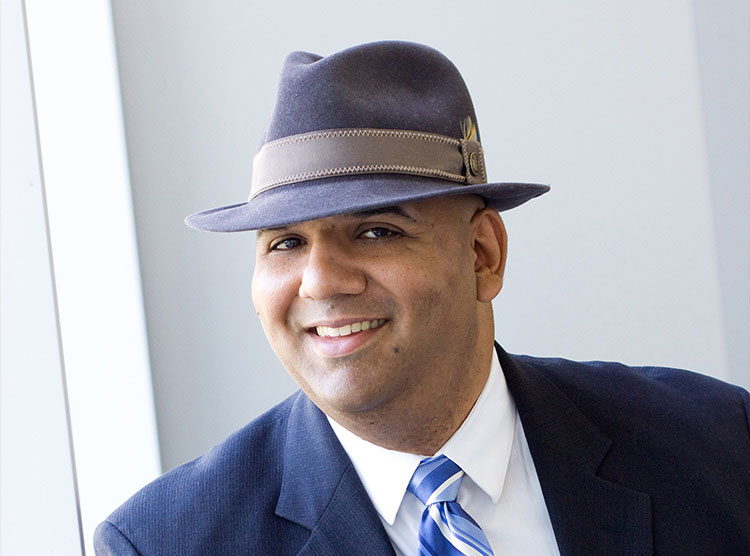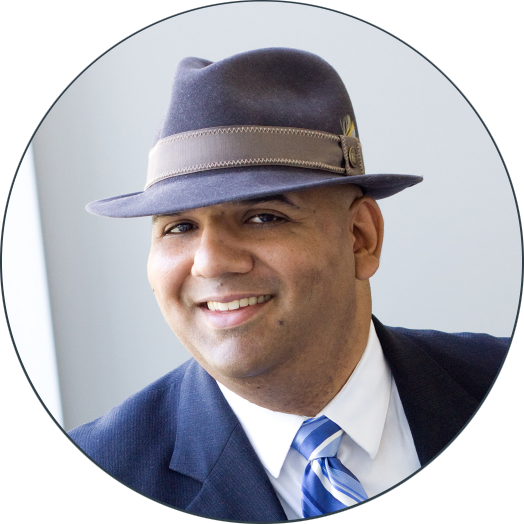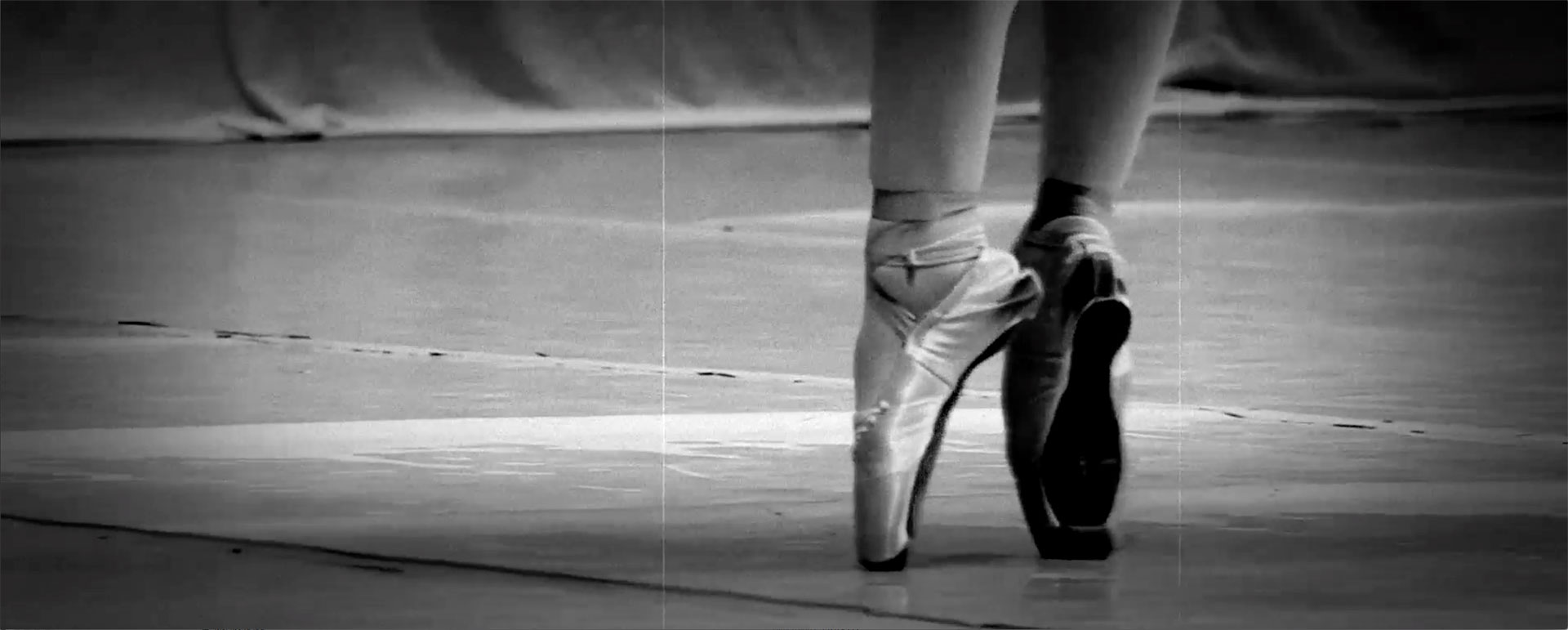
Words: Jan Jarvis Photos: Jill Johnson Design: Carl Bluemel Code: Mike Brown

Injured performers are finding their way to a UNT Health Science Center doctor who speaks their language and soothes their pain
Tightness in her hip flexors made leaps excruciating for Hannah Requa, a professional dancer who spends much of her day on her toes.
She was hardly a stranger to pain. Over her career she has endured a torn Achilles tendon, a pulled hamstring and bursitis. Like most dancers, she pirouettes through the pain.
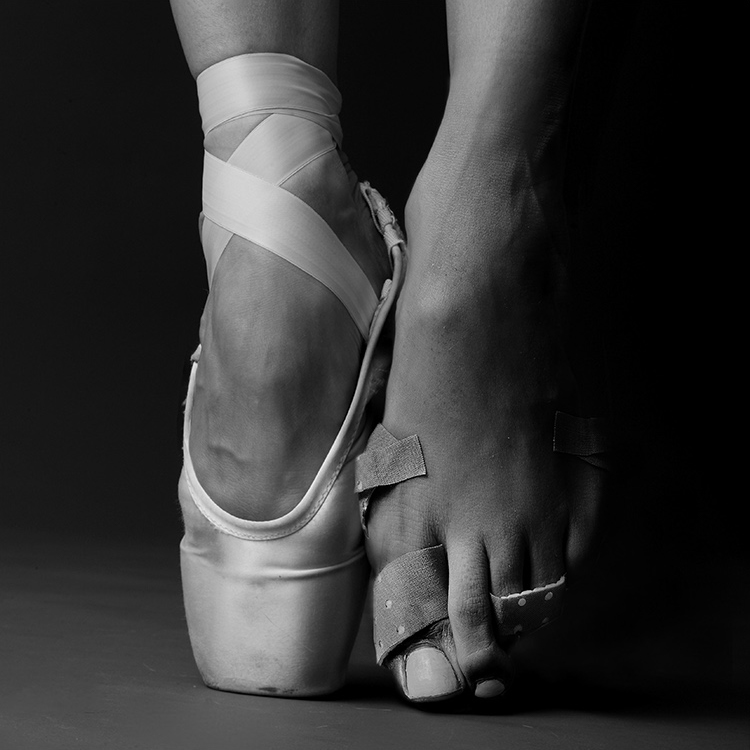 “I wake up every morning and wonder if the pain is going to affect my performance, or worse, is it going to affect the length of my career,” she said. “But pain is just part of the world I live in, and each injury becomes part of my journey.”
Often injuries end careers and quash the dreams of performers. Some 95 percent of dancers injure their ankles, hips and shoulders. An estimated 89 percent of musicians experience injuries severe enough to affect their performances. Singers and actors endure a variety of injuries brought on by their work.
Although such injuries can be just as serious as those experienced by professional athletes, the damage that performing artists endure historically has been largely ignored. But that lack of awareness is changing as more people learn about the severity of the injuries and what can be done to prevent them.
Leading the charge is Sajid Surve, DO, a triple board-certified physician who draws on his training in physical, manipulative and pain medicine to get performers back on stage. Since his arrival at UNT Health Science Center in 2014, Dr. Surve has become a pied piper to performers throughout North Texas.
An Associate Professor of Family Medicine at UNTHSC, he also is Co-Director of the Texas Center for Performing Arts Health, a unique partnership between the University of North Texas College of Music and UNTHSC that combines expertise from schools of music and medicine to make performing arts safer and artists healthier.
In recent years there’s been a growing effort to raise awareness that many medical problems associated with learning and performing music can be prevented, said Kris Chesky, PhD, the center’s other Co-Director.
“I wake up every morning and wonder if the pain is going to affect my performance, or worse, is it going to affect the length of my career,” she said. “But pain is just part of the world I live in, and each injury becomes part of my journey.”
Often injuries end careers and quash the dreams of performers. Some 95 percent of dancers injure their ankles, hips and shoulders. An estimated 89 percent of musicians experience injuries severe enough to affect their performances. Singers and actors endure a variety of injuries brought on by their work.
Although such injuries can be just as serious as those experienced by professional athletes, the damage that performing artists endure historically has been largely ignored. But that lack of awareness is changing as more people learn about the severity of the injuries and what can be done to prevent them.
Leading the charge is Sajid Surve, DO, a triple board-certified physician who draws on his training in physical, manipulative and pain medicine to get performers back on stage. Since his arrival at UNT Health Science Center in 2014, Dr. Surve has become a pied piper to performers throughout North Texas.
An Associate Professor of Family Medicine at UNTHSC, he also is Co-Director of the Texas Center for Performing Arts Health, a unique partnership between the University of North Texas College of Music and UNTHSC that combines expertise from schools of music and medicine to make performing arts safer and artists healthier.
In recent years there’s been a growing effort to raise awareness that many medical problems associated with learning and performing music can be prevented, said Kris Chesky, PhD, the center’s other Co-Director.
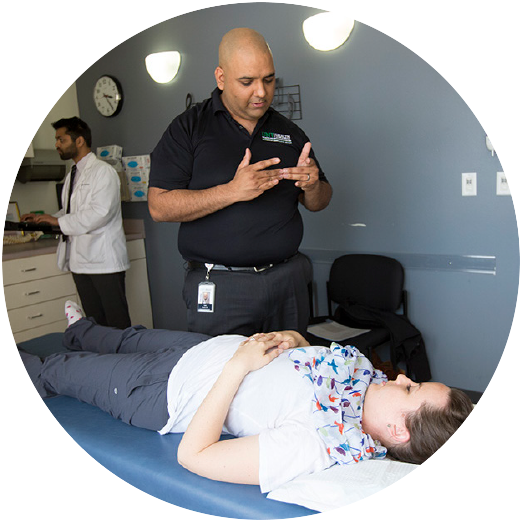 “As a result, future musicians will be aware of the occupational health risks associated with learning and performing music and will be knowledgeable and competent to manage them,” Dr. Chesky said.
Dr. Surve provides comprehensive but somewhat unconventional care, doctoring for dancers and practicing medicine for musicians. Once a week he travels to UNT in Denton to see music students there. It’s all in an effort to further the study of how music and medicine fit together.
It is indeed a unique environment where, for example, sensors are built into piano keys to measure how hard pianists hit them. On any given day, it’s not uncommon to hear the sound of a saxophone or beat of a drum bouncing off the walls of the examination rooms where Dr. Surve sees patients.
Performers have found in Dr. Surve someone who does more than treat their injuries. A musician himself, he speaks their language.
“My body is my instrument,” said Requa, a professional dancer with the Bruce Wood Dance Project. “To find someone who understands your instrument as well as you do is such a gift.”
Other physicians can treat her pain, she said. But Dr. Surve understands a dancer’s need to perform in spite of it.
“He doesn’t just look at what happened,” she said. “He looks at why it happened.”
“As a result, future musicians will be aware of the occupational health risks associated with learning and performing music and will be knowledgeable and competent to manage them,” Dr. Chesky said.
Dr. Surve provides comprehensive but somewhat unconventional care, doctoring for dancers and practicing medicine for musicians. Once a week he travels to UNT in Denton to see music students there. It’s all in an effort to further the study of how music and medicine fit together.
It is indeed a unique environment where, for example, sensors are built into piano keys to measure how hard pianists hit them. On any given day, it’s not uncommon to hear the sound of a saxophone or beat of a drum bouncing off the walls of the examination rooms where Dr. Surve sees patients.
Performers have found in Dr. Surve someone who does more than treat their injuries. A musician himself, he speaks their language.
“My body is my instrument,” said Requa, a professional dancer with the Bruce Wood Dance Project. “To find someone who understands your instrument as well as you do is such a gift.”
Other physicians can treat her pain, she said. But Dr. Surve understands a dancer’s need to perform in spite of it.
“He doesn’t just look at what happened,” she said. “He looks at why it happened.”
 “I wake up every morning and wonder if the pain is going to affect my performance, or worse, is it going to affect the length of my career,” she said. “But pain is just part of the world I live in, and each injury becomes part of my journey.”
Often injuries end careers and quash the dreams of performers. Some 95 percent of dancers injure their ankles, hips and shoulders. An estimated 89 percent of musicians experience injuries severe enough to affect their performances. Singers and actors endure a variety of injuries brought on by their work.
Although such injuries can be just as serious as those experienced by professional athletes, the damage that performing artists endure historically has been largely ignored. But that lack of awareness is changing as more people learn about the severity of the injuries and what can be done to prevent them.
Leading the charge is Sajid Surve, DO, a triple board-certified physician who draws on his training in physical, manipulative and pain medicine to get performers back on stage. Since his arrival at UNT Health Science Center in 2014, Dr. Surve has become a pied piper to performers throughout North Texas.
An Associate Professor of Family Medicine at UNTHSC, he also is Co-Director of the Texas Center for Performing Arts Health, a unique partnership between the University of North Texas College of Music and UNTHSC that combines expertise from schools of music and medicine to make performing arts safer and artists healthier.
In recent years there’s been a growing effort to raise awareness that many medical problems associated with learning and performing music can be prevented, said Kris Chesky, PhD, the center’s other Co-Director.
“I wake up every morning and wonder if the pain is going to affect my performance, or worse, is it going to affect the length of my career,” she said. “But pain is just part of the world I live in, and each injury becomes part of my journey.”
Often injuries end careers and quash the dreams of performers. Some 95 percent of dancers injure their ankles, hips and shoulders. An estimated 89 percent of musicians experience injuries severe enough to affect their performances. Singers and actors endure a variety of injuries brought on by their work.
Although such injuries can be just as serious as those experienced by professional athletes, the damage that performing artists endure historically has been largely ignored. But that lack of awareness is changing as more people learn about the severity of the injuries and what can be done to prevent them.
Leading the charge is Sajid Surve, DO, a triple board-certified physician who draws on his training in physical, manipulative and pain medicine to get performers back on stage. Since his arrival at UNT Health Science Center in 2014, Dr. Surve has become a pied piper to performers throughout North Texas.
An Associate Professor of Family Medicine at UNTHSC, he also is Co-Director of the Texas Center for Performing Arts Health, a unique partnership between the University of North Texas College of Music and UNTHSC that combines expertise from schools of music and medicine to make performing arts safer and artists healthier.
In recent years there’s been a growing effort to raise awareness that many medical problems associated with learning and performing music can be prevented, said Kris Chesky, PhD, the center’s other Co-Director.
 “As a result, future musicians will be aware of the occupational health risks associated with learning and performing music and will be knowledgeable and competent to manage them,” Dr. Chesky said.
Dr. Surve provides comprehensive but somewhat unconventional care, doctoring for dancers and practicing medicine for musicians. Once a week he travels to UNT in Denton to see music students there. It’s all in an effort to further the study of how music and medicine fit together.
It is indeed a unique environment where, for example, sensors are built into piano keys to measure how hard pianists hit them. On any given day, it’s not uncommon to hear the sound of a saxophone or beat of a drum bouncing off the walls of the examination rooms where Dr. Surve sees patients.
Performers have found in Dr. Surve someone who does more than treat their injuries. A musician himself, he speaks their language.
“My body is my instrument,” said Requa, a professional dancer with the Bruce Wood Dance Project. “To find someone who understands your instrument as well as you do is such a gift.”
Other physicians can treat her pain, she said. But Dr. Surve understands a dancer’s need to perform in spite of it.
“He doesn’t just look at what happened,” she said. “He looks at why it happened.”
“As a result, future musicians will be aware of the occupational health risks associated with learning and performing music and will be knowledgeable and competent to manage them,” Dr. Chesky said.
Dr. Surve provides comprehensive but somewhat unconventional care, doctoring for dancers and practicing medicine for musicians. Once a week he travels to UNT in Denton to see music students there. It’s all in an effort to further the study of how music and medicine fit together.
It is indeed a unique environment where, for example, sensors are built into piano keys to measure how hard pianists hit them. On any given day, it’s not uncommon to hear the sound of a saxophone or beat of a drum bouncing off the walls of the examination rooms where Dr. Surve sees patients.
Performers have found in Dr. Surve someone who does more than treat their injuries. A musician himself, he speaks their language.
“My body is my instrument,” said Requa, a professional dancer with the Bruce Wood Dance Project. “To find someone who understands your instrument as well as you do is such a gift.”
Other physicians can treat her pain, she said. But Dr. Surve understands a dancer’s need to perform in spite of it.
“He doesn’t just look at what happened,” she said. “He looks at why it happened.”
Professional dancer Hannah Requa had a history of injuries, but it was excruciating hip flexor pain that forced her to seek help.
The perils of playing
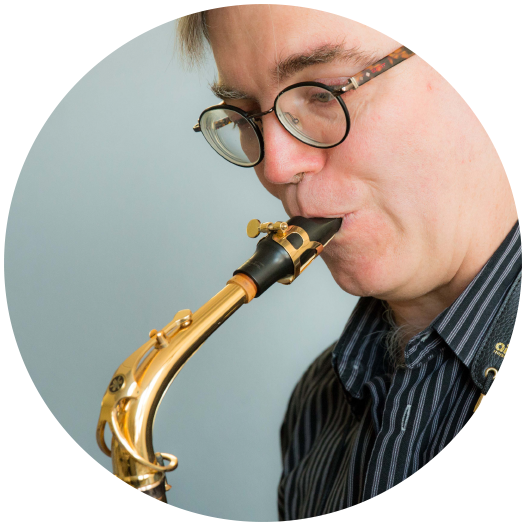 Eric Nestler has played the saxophone on stages all over the world.
But a few years ago, he was stopped cold by tremors that rippled down his jaw. His tongue contorted. The muscles in his neck tightened so much he could no longer play the music he loved.
“I knew something was wrong,” he said. “But I had no control over it.”
Focal dystonia, a condition characterized by involuntary muscle contractions, was stealing his ability to perform. Playing the saxophone, the instrument Nestler had dedicated hours to each day since middle school, was now destroying his career.
Dr. Surve is the first person to say how much he appreciates music. But he knows, too, that playing it is a task that comes with risks: inflamed tendons, nerve damage, muscle pain, hearing loss.
For pianists, it’s tendonitis. For trombone players, it’s left shoulder injuries. Singers can lose their voice. Even conductors endure pain from holding their arms above their heads.
Focal dystonia affects an estimated 1 percent of all musicians and is triggered by repetitive movements. By the time Nestler, a music professor at the University of North Texas, came to Dr. Surve, he was desperate for relief.
He’d gone to different doctors, considered Botox injections for his chin and tried acupuncture, which provided temporary help. But no treatment worked long term until he saw Dr. Surve, who used osteopathic manipulative medicine to ease the tension in Nestler’s jaw.
“Now I have range again and am able to play in tune, whereas before I couldn’t do that.”-Eric Nestler
Dr. Surve also suggested an unexpected treatment: playing another instrument. By retraining the brain to master a new task, musicians with focal dystonia are sometimes able to return to playing, Dr. Surve said. He suggested Nestler try the flute.
“Playing the flute uses the same muscles as the saxophone, but in a different way,” Dr. Surve said. “As he gets better at playing the flute, he’ll get better at playing the saxophone again.”
Nestler still has focal dystonia, but the treatment has allowed him to perform again.
“Much of my energy is still devoted to not letting the tremors occur when I’m playing,” he said. “But now I have range again and am able to play in tune, whereas before I couldn’t do that.”
Eric Nestler has played the saxophone on stages all over the world.
But a few years ago, he was stopped cold by tremors that rippled down his jaw. His tongue contorted. The muscles in his neck tightened so much he could no longer play the music he loved.
“I knew something was wrong,” he said. “But I had no control over it.”
Focal dystonia, a condition characterized by involuntary muscle contractions, was stealing his ability to perform. Playing the saxophone, the instrument Nestler had dedicated hours to each day since middle school, was now destroying his career.
Dr. Surve is the first person to say how much he appreciates music. But he knows, too, that playing it is a task that comes with risks: inflamed tendons, nerve damage, muscle pain, hearing loss.
For pianists, it’s tendonitis. For trombone players, it’s left shoulder injuries. Singers can lose their voice. Even conductors endure pain from holding their arms above their heads.
Focal dystonia affects an estimated 1 percent of all musicians and is triggered by repetitive movements. By the time Nestler, a music professor at the University of North Texas, came to Dr. Surve, he was desperate for relief.
He’d gone to different doctors, considered Botox injections for his chin and tried acupuncture, which provided temporary help. But no treatment worked long term until he saw Dr. Surve, who used osteopathic manipulative medicine to ease the tension in Nestler’s jaw.
“Now I have range again and am able to play in tune, whereas before I couldn’t do that.”-Eric Nestler
Dr. Surve also suggested an unexpected treatment: playing another instrument. By retraining the brain to master a new task, musicians with focal dystonia are sometimes able to return to playing, Dr. Surve said. He suggested Nestler try the flute.
“Playing the flute uses the same muscles as the saxophone, but in a different way,” Dr. Surve said. “As he gets better at playing the flute, he’ll get better at playing the saxophone again.”
Nestler still has focal dystonia, but the treatment has allowed him to perform again.
“Much of my energy is still devoted to not letting the tremors occur when I’m playing,” he said. “But now I have range again and am able to play in tune, whereas before I couldn’t do that.”
Under Dr. Sajid Surve’s care, Eric Nestler still has tremors, but he is able to perform again.
Knowing the vocabulary
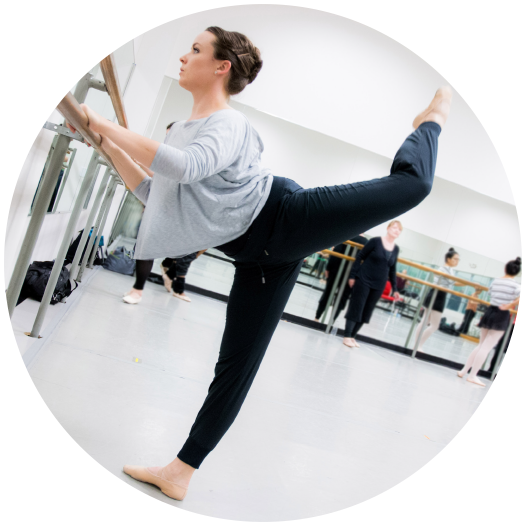 When Requa told Dr. Surve about her hip pain, his response caught her by surprise. He asked her to demonstrate her developpe, a move in which the leg is gradually unfolded and extended into the air.
“He actually knows the vocabulary of dance,” Requa said.
By observing her in action, Dr. Surve could determine the source of her pain and manipulate the pelvis to relieve it. Since then Requa has turned to Dr. Surve for other dance-related ailments.
“He seems to just know why my hip is bothering me and then he calmly adjusts it,” she said. “He wants to keep you performing for as long as it’s possible and healthy.”
Dancing is notoriously brutal on bodies. The annual injury rate for dancers is 75 percent to 95 percent, with more than 20 percent of those being hip injuries.
“We know dancers are going to injure themselves. So we have to find ways to manage that.”-Dr. Sajid Surve
“We know dancers are going to injure themselves,” Dr. Surve said. “So we have to find ways to manage that.”
Requa is confident that with Dr. Surve’s help, she’ll be able to continue her career for a long time.
“He knows how the body is supposed to be,” she said. “And he knows how to put it back together when it’s not.”
When Requa told Dr. Surve about her hip pain, his response caught her by surprise. He asked her to demonstrate her developpe, a move in which the leg is gradually unfolded and extended into the air.
“He actually knows the vocabulary of dance,” Requa said.
By observing her in action, Dr. Surve could determine the source of her pain and manipulate the pelvis to relieve it. Since then Requa has turned to Dr. Surve for other dance-related ailments.
“He seems to just know why my hip is bothering me and then he calmly adjusts it,” she said. “He wants to keep you performing for as long as it’s possible and healthy.”
Dancing is notoriously brutal on bodies. The annual injury rate for dancers is 75 percent to 95 percent, with more than 20 percent of those being hip injuries.
“We know dancers are going to injure themselves. So we have to find ways to manage that.”-Dr. Sajid Surve
“We know dancers are going to injure themselves,” Dr. Surve said. “So we have to find ways to manage that.”
Requa is confident that with Dr. Surve’s help, she’ll be able to continue her career for a long time.
“He knows how the body is supposed to be,” she said. “And he knows how to put it back together when it’s not.”
A misaligned tendon in Nabeel Zuhdi’s left thumb left him in constant pain.
The strain of strumming
Pain in his left thumb nearly became Nabeel Zuhdi’s undoing. A classically trained guitarist, he practiced five hours a day in between his job as a waiter. But the wear and tear on his thumb caused by carrying heavy trays and strumming his guitar left him in constant pain. “Not everyone gets injured, but if you are practicing four hours a day, six or seven days a week, and you are repeating the same motion, your body is going to get fatigued.”-Dr. Sajid Surve “It was all very devastating,” Zuhdi said. A graduate music student at UNT, he knew that injuries often plague musicians. He was even researching a study on the subject. He turned to Dr. Surve, who examined his hand and quickly determined that a tendon was misaligned, causing additional fatigue on the muscle. “He smashed the muscle using his hand,” Zuhdi said. “It hurt at the time, but after several days it got better.” The sharp pain that he had struggled with for years soon disappeared, and he resumed playing without pain. Repetitive stress injuries are among the most common for musicians, Dr. Surve said. “Not everyone gets injured, but if you are practicing four hours a day, six or seven days a week, and you are repeating the same motion, your body is going to get fatigued,” he said. Rather than focusing on the instrument a musician plays, Dr. Surve looks at the whole patient, from their posture to the way they move. Just as with sports, there are ways to reduce the risk of performance injuries. Along with colleagues at UNT, Dr. Surve has pushed for new standards that require colleges to inform students of the risks that come with performing. “Musicians need to take breaks and do stretching exercises to get their bodies ready to perform,” Dr. Surve said. “And they need to be able to recognize when there’s a problem.” That awareness could spare musicians the agony of injuries and the tendency to just push through the pain without getting treated, Zuhdi said. “It’s devastating to have an injury,” he said. “And it feels so good when you actually get relief.”***
